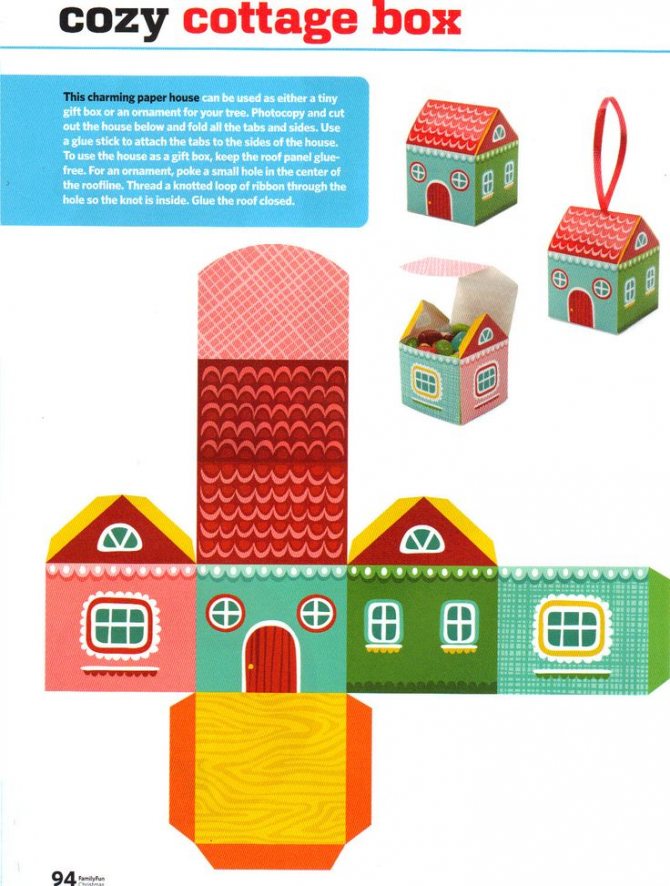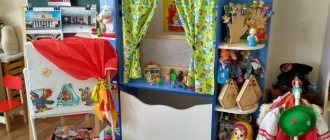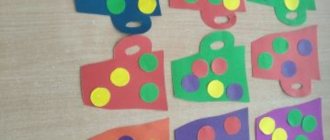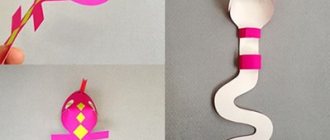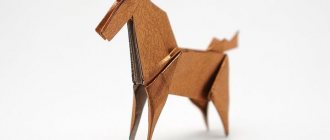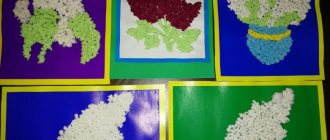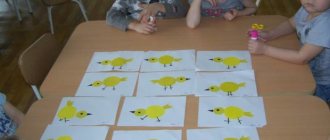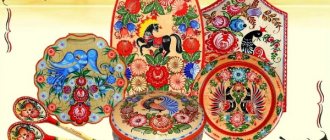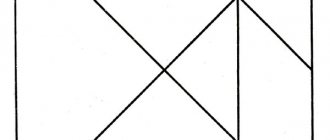Why are paper dolls so popular?
Despite the fact that our children have everything they need for development - construction sets, puzzles, interactive toys and technical innovations - dolls with clothes cut out of paper remain at the peak of popularity.
- Girls can sit for hours coming up with new outfits and fashionable accessories for paper dolls. It's so fun and interesting! And most importantly, it gives room for creativity, because the costs are minimal - a sheet of white paper and pencils.
- Different models of clothing can be borrowed from other dolls, creating the necessary toy wardrobe.
- Real Bratz or Barbie, Winx or Monster High dolls have a very meager set of clothes, since not every girl knows how to sew, and store-bought outfits are quite expensive. Paper models can have hundreds of bright and original outfits that a girl can come up with on her own or copy from a fashion magazine.
Paper dolls can be printed on regular white paper and then glued to cardboard, or you can immediately use thick paper. You just need to print out the dolls and cut them out - and the new game “Dress the Doll!” ready! And how many different outfits you can come up with for it!
Summary of GCD for the “Doll” applique in the senior group
Lidiya Semicheva
Summary of GCD for the “Doll” applique in the senior group
Educational field: artistic and aesthetic development.
Integration with other educational areas: cognition, socio-communicative development, speech development.
Goal: to clarify children’s knowledge about the human structure through applications
Training tasks:
1. Strengthen the ability to compose an image in parts from different geometric shapes.
2. Strengthen the skills of careful gluing and careful use of scissors.
3. Practice cutting forms in a straight line, into several parts, along folds; cut circles more accurately.
4. Consolidation of the human structure.
Developmental tasks:
1. Develop imaginative ideas, imagination and creativity.
2. Develop hand-eye coordination.
Educational tasks:
1. Cultivate accuracy in work and attentiveness.
2. Fosters creative initiative in completing a task
Methods and techniques: game situation - letter, questions from the teacher, showing methods of action, reminder, help, examination of samples, explanation, independent activity of children, encouragement, analysis of children's work, reflection, individual approach, instructions.
Preliminary work: examination of illustrations, albums “Human Structure”. Didactic game “Find the named body part by touch”, “Assemble a little man”, memorizing a poem about body parts.
Demonstration material: samples of doll appliqué
Handouts: scissors, glue, glue brushes, napkin, oilcloth, sheet of A5 paper, brush stand, glue jar, large semicircle with a radius of 9cm, black and pink squares 4x4cm, pink rectangle 1x3cm, square 3x3cm, 2 pink trapezoids, square 1.5x1.5 cm, colored paper for additional creativity.
Individual work: With Yaroslav, Seva, consolidate the ability to sequentially paste an image.
Differentiated approach: the child who finishes his work before everyone else can decorate the doll’s dress with a pattern of geometric shapes.
1. Organizational moment.
— Guys, today they brought a letter to our group: “Hello children, Ivan Ivanovich is writing to you. I'm the director of a toy store. Our store opens tomorrow, but we have a problem: all our dolls are missing! I ask you, please help me."
- Well, what about helping Ivan Ivanovich? What do we need to do for this?
2. Move.
Guys, you all were in a toy store and saw dolls there. So that it doesn’t get boring in Ivan Ivanovich’s store, you and I will make dolls in clothes of different colors, so that the children who come shopping can choose a doll to their liking.
- Let's look at the samples. What body parts do dolls have? What is located on the head? What is located on the body? What are the dolls wearing? What geometric shapes do the body parts and clothes of the dolls resemble?
- Let's look at the material we will work with. What's on your plate?
- Now I will show you the sequence of work. 1. First I cut out the head from a pink square. How will I do this? I cut the corners with scissors. Now I need to do the doll's hair. I take a black square, cut off the corners, and it turns out to be a circle. I will make bangs and ponytails for the doll. To do this, I fold the black circle in half and cut it along the fold line into 2 equal parts. One semicircle is the bangs, and I will fold the second semicircle in half and cut it along the fold line, dividing the whole into parts. It turned out to be 2 tails. Now I’ll take the blue largest semicircle for the dress, fold it in half and divide it into 2 even parts, cutting along the fold line. The dress is ready. The dolls' dresses have puffed sleeves. To make them, you need to cut a circle out of a blue square and divide it into 2 even parts. The result was two semicircular sleeves. Now I’ll take the pink rectangle and also fold it in half to cut out two arms. Our doll's legs are 2 pink trapezoids. I will make sandals for the doll from the smallest blue square. I cut corners. I divide the circle into equal parts. The result is 2 semicircular sandals. 2. Now I put aside the scissors and scraps of paper, take a blank sheet of paper and lay out an image of the doll on it in the following sequence: head, bangs, ponytails, triangular dress, sleeves, arms, legs, sandals. My doll will be located in the center of the sheet. 3. Now you can stick it.
— You can choose any color of clothing. Whoever finishes his work before everyone else can decorate the doll's dress with a pattern of geometric shapes.
The rules for using scissors and glue are also repeated and the children begin to work.
Children independently choose details for clothes of any color.
Children do applique. The teacher helps if necessary.
3. Reflection
The teacher lays out the finished work on the table and asks the children to come up. Asks children to evaluate their work and the work of other children. Praises children, noting interesting features of each child's work.
— What did you like most about your work?
— What was difficult for you in making them?
“And now we’ll put all the dolls in a parcel and send them to the store.” The director will be very happy, and tomorrow he will be able to open the store and please the kids.
From cutting paper
Paper dolls are a game from our childhood. Of course, it’s no wonder that every modern girl has taken over from her mother an interest in paper beauties.
In order for the clothes to stay on the doll and not fall, special “folds” need to be made on the shoulders, as well as on the waist and, if possible, on the hips. For panties and shorts, folds are made at the hips and legs.
These cute baby dolls are just like children! You can play with them, draw them a beautiful bed, clothes and furry pets. But there is one thing: such paper toys are short-lived, even if glued to thick cardboard. They cannot be bathed, sat or fed (like real baby dolls, for example). But, nevertheless, interest in such toys does not fade. Patterns of paper dolls for cutting out “Kids”:
Tataway doll with clothes
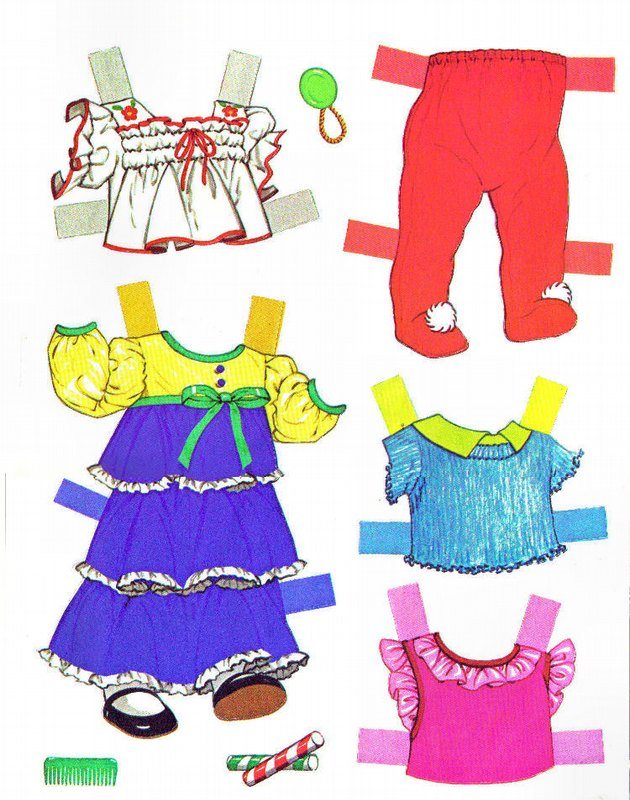
And this is a paper bag for a Tataway doll - it can also be printed, cut and glued
4 more cute baby dolls to cut out with clothes
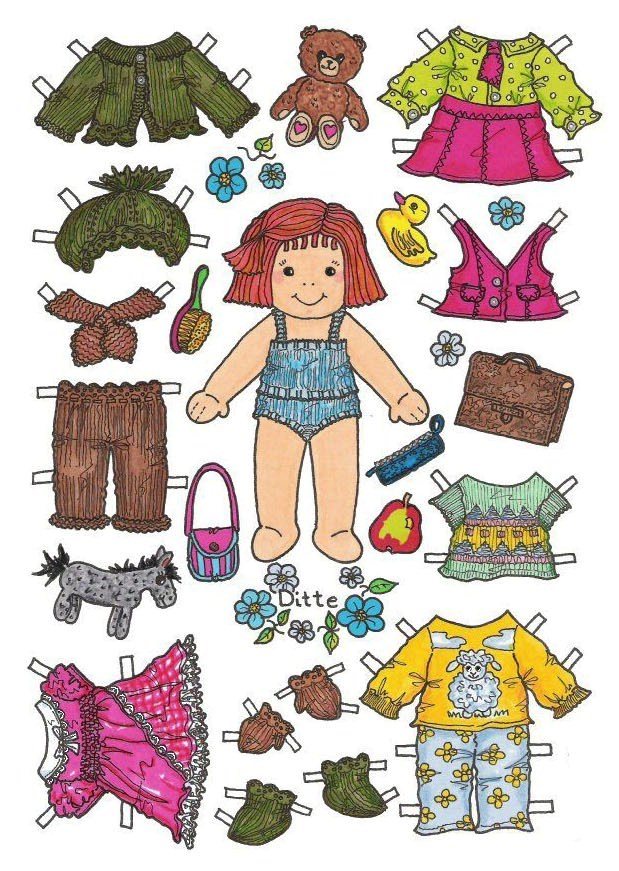
Dolls from the “Kids” set
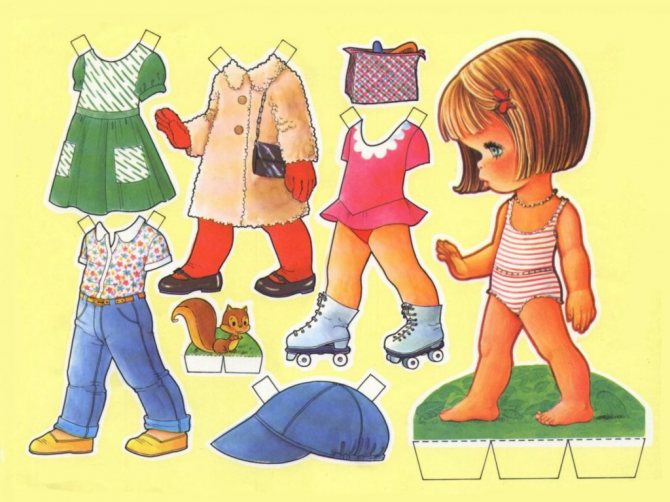
You can download the “Babies” archive here (there are a total of 26 dolls with clothes in the set).
My Little Pony paper dolls with clothes
From a cute and funny cartoon series, we learned about beautiful little ponies that personify all the kindest and good qualities. This is My Little Pony. Children fall in love with beautiful ponies, and they want to play with cartoon heroine dolls. Therefore, a separate section appeared in the collection of paper toys. Here is Princess Celestia and all the ponies: Twilight Sparkle, Rainbow Dash, Rarity, Applejack, Fluttershy, Pinkie Pie. Each of them has beautiful clothes that kids can also print out to dress up their favorite dolls. With the help of these paper dolls, children can create their own magical land in which all the ponies will live happily, in harmony and friendship.
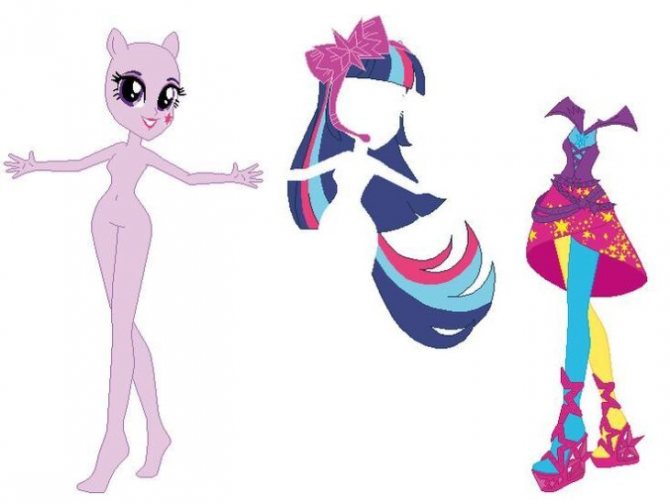
In national costumes
Thematic selection of paper dolls with national clothes. The advantage of such a selection is that the girl gets to know different folk costumes: Mongolian, Northern peoples, Mexican, Russian, etc.
These costume cutting stencils reflect the national traditions of different countries, which can be useful for the little budding designer. But such baby dolls do not have a model appearance, like Barbie or Winx. But we hope that your girls will like them too:
It is worth noting that these dolls were sent to us by our reader, Irina S. The archive contains 7 sheets (+ 2 additional costumes), you can download it here
The next set of dolls in national costumes for cutting
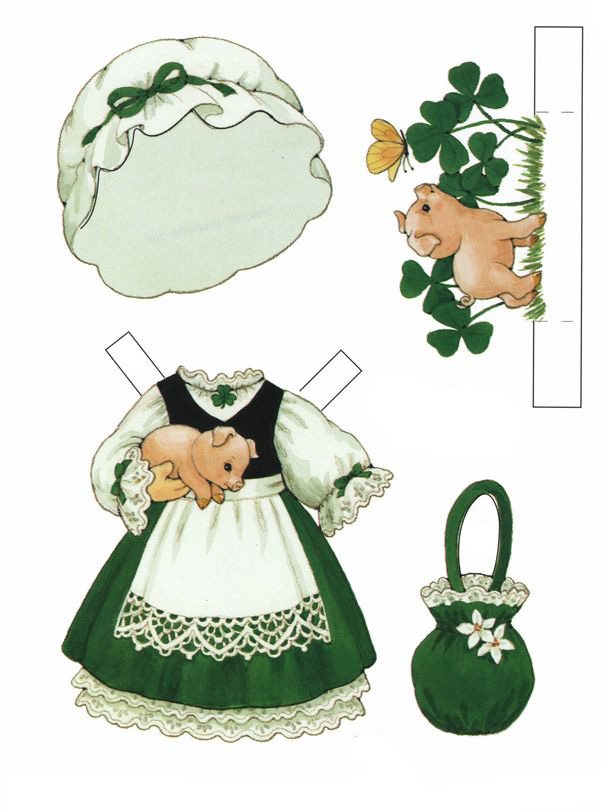
You can download the full 1.29 MB archive here, the archive contains 12 sheets, we only posted half).
Paper Barbie with clothes
Well, what girl doesn’t dream of a Barbie doll or something similar? By printing a doll on a sheet of paper with clothes, you can conduct very interesting experiments by combining various wardrobe items.
The doll’s slender figure will help girls create bright images, because it’s very easy:
- Just trace the contour of the doll's figure, give it the desired shape (skirts, dresses and trousers), and then paint the clothes using your imagination - and the new thing for the doll is ready!
- Glue a box from colored cardboard, decorate it or paint it and use it as a “closet” for doll clothes;
- If fragile paper clothes suddenly get damaged (torn or wrinkled), then they can be easily replaced with new ones - you just need to print out a new template for the paper doll and clothes - and that’s it!
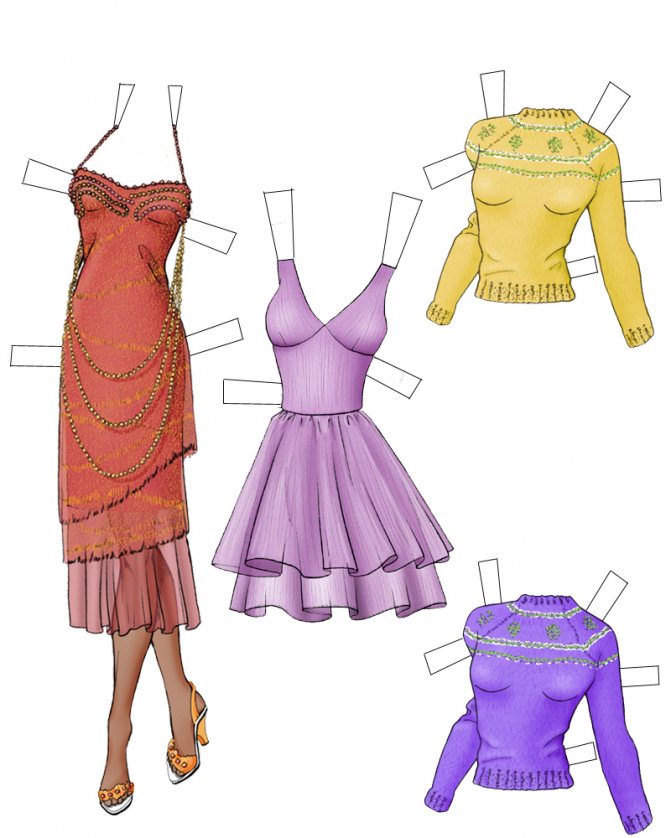
You can download the entire archive with clothes for the doll here (2.47 MB). There are a total of 8 cutting templates in the archive.
The Barbie doll has its own history, which begins in the distant 50s. The first doll was released in 1959 in the USA in the state of Wisconsin, since then it has gained immense popularity, and, of course. it was copied on paper by those who could not buy the real thing.
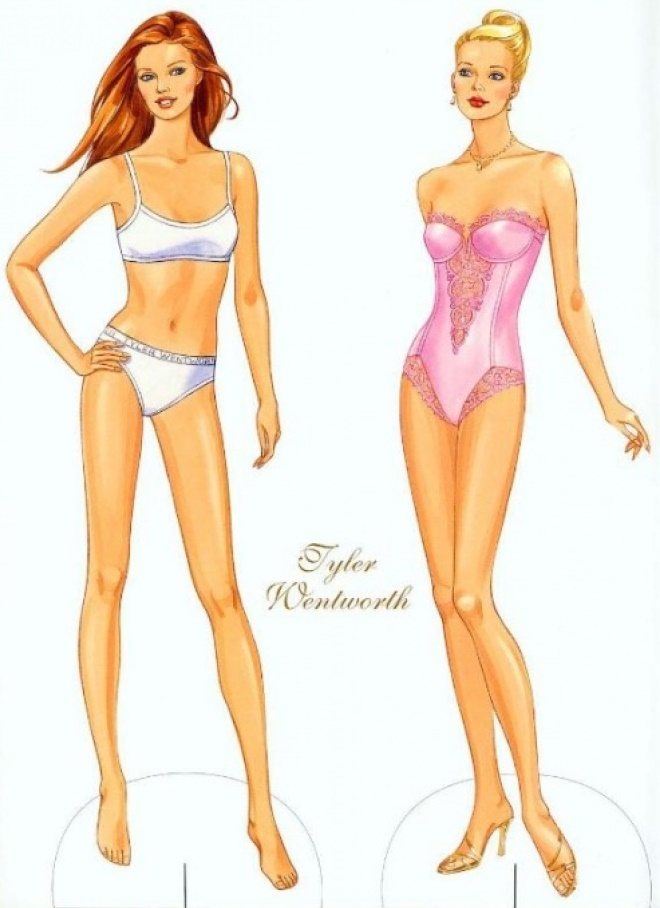
In addition to paper Barbie dolls, the following stencils for cutting are quite popular - Bill and Candy - paper dolls from the Second World War, with clothes, taken from foreign magazines:
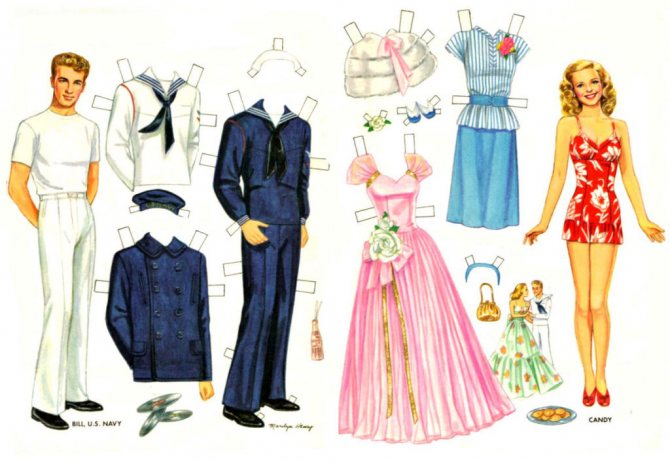
Black and white paper dolls boy and girl with clothes - print and color
This selection of dolls has absolute scope for imagination! Here you can choose whether to print a boy or a girl and make a toy from the templates. There is a whole wardrobe for the dolls: clothes for every occasion. And with all this, both the dolls and their clothes can be decorated. What color will the doll's hair be, what color will her dress, T-shirt or shoes be? It's up to you to decide. It is very convenient to use the selection. And it’s great that those kids who like to color pictures will get 3 in 1: a doll, outfits for the doll, and the opportunity to do everything to their liking.
Paper Bratz with clothes
The popularity of the cartoon of the same name led to the fact that the main characters began to be copied, including in the form of paper copies. Fashion dolls made from cutting paper can easily compete with the same Barbie or Winx. Cute, beautiful, with big expressive eyes, the Brothers have already managed to find their young fans.
A special feature of Bratz dolls is the presence of fashionable, modern and stylish outfits. The finished templates just need to be printed, cut out and glued onto thick cardboard so that the dolls do not tear.
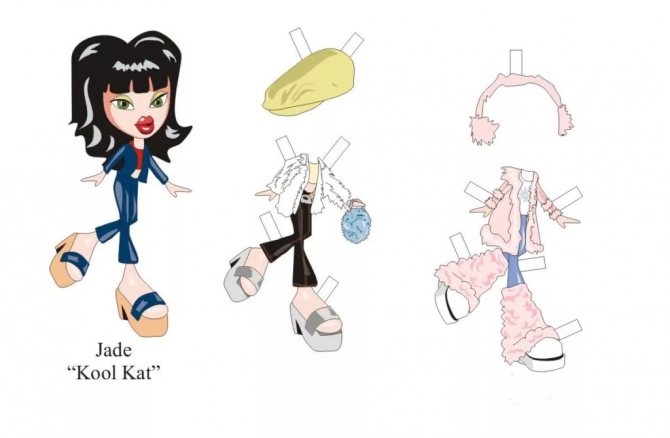
Other interesting patterns for cutting
Each age will have its own doll that will be interesting. For very young children, these are baby dolls and baby dolls; for older people, it is better to find teenage dolls or the same Bratz or Winx. The peculiarity of such dolls is that they are quite cheap for parents, so if a girl doesn’t like the doll or is torn, replacing it will not be difficult.
October doll with clothes to cut out
Masha doll templates
Paper doll Alenka with clothes
It can be printed.
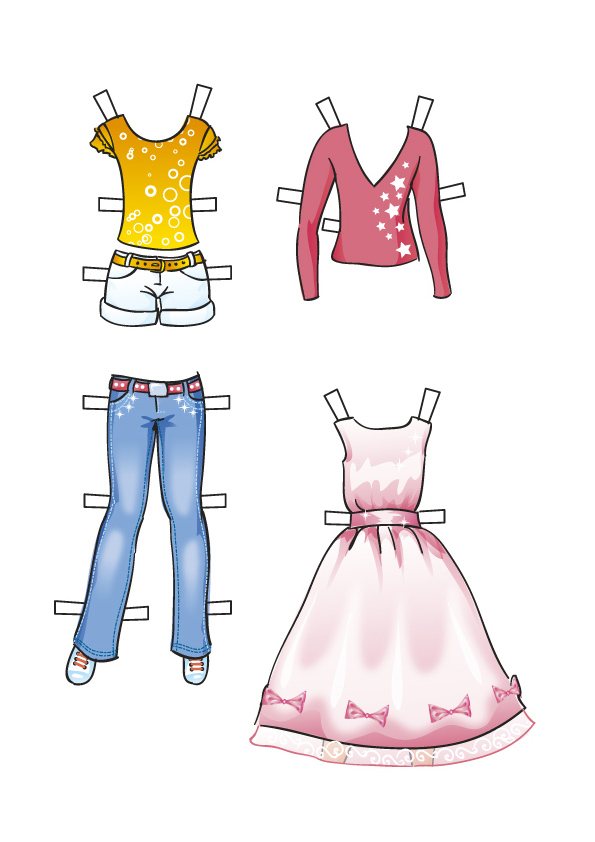
Bobbt Shapto and Little Miss Muffet paper dolls
More very interesting dolls with outfits from a foreign magazine
Julie paper doll with clothes from a foreign magazine
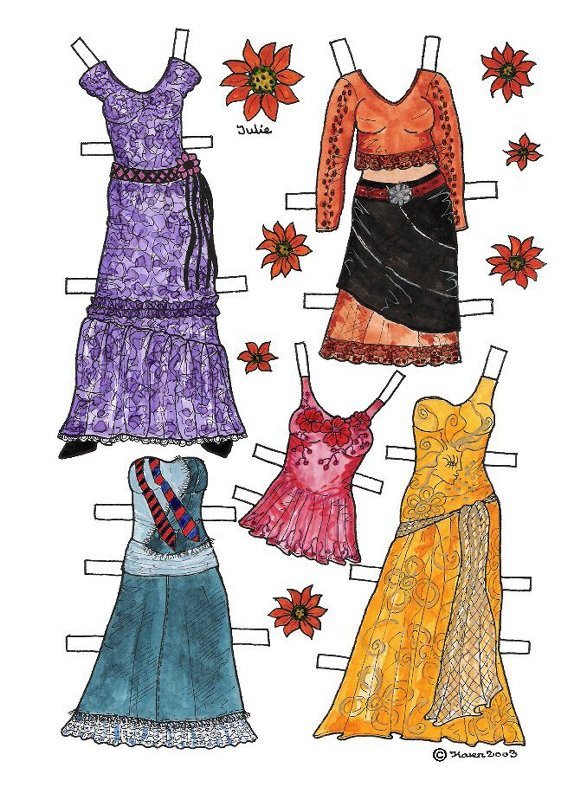
Three dolls with clothes taken from foreign magazines, on one sheet:
Paper dolls from the Soviet past
“Getting” a bright magazine in Soviet times was a great rarity and luck. Well, if it also printed dolls with clothes for cutting out, the girls were simply happy. Toy dolls were cut out, and new outfits were invented for them.
The first Soviet paper doll was released in 1972 and her name, of course, was Mashenka. The game was released in the city of Perm and was called “Dress Mashenka”.
Well, unfortunately, we don’t have Mashenka, but we will provide you with other paper beauties from that time. By the way, all their outfits are in the style of the 70s and 80s:
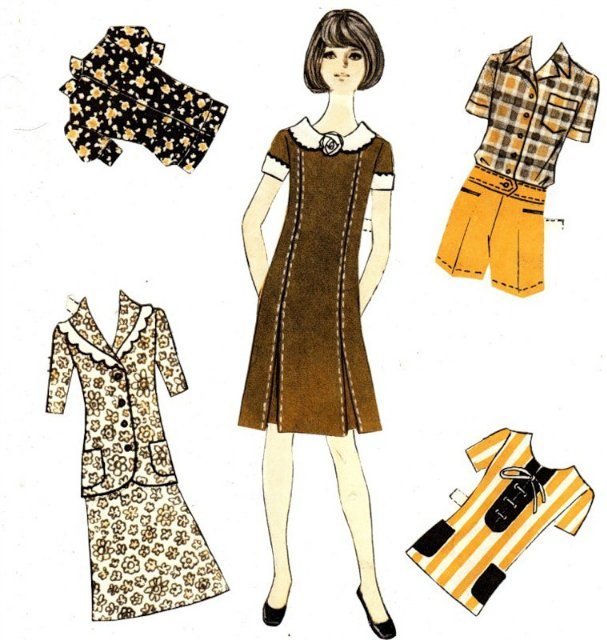
Soviet paper dolls were not as colorful as they are now. And the quality of the paper on which they were printed left much to be desired.
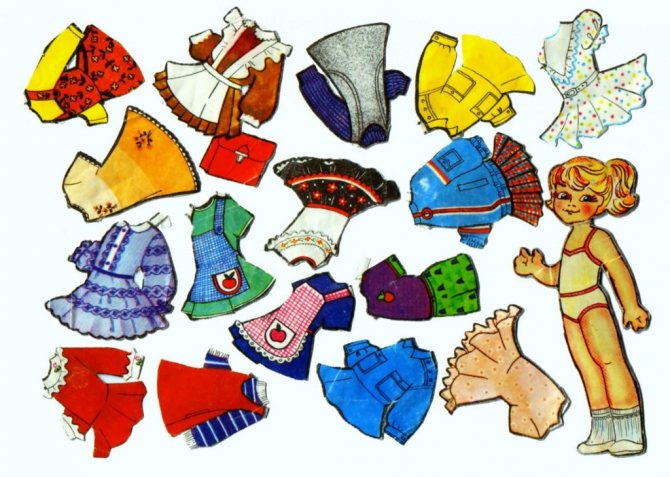
Paper animal dolls
You can cut out not only girl dolls from paper (although such toys are more common), but also all kinds of animals - cats, bears, dogs. Such animals in the game can talk, make friends, get to know each other, and dress up. In general, they can be played with in the same way as paper dolls.
You can download an additional archive with animal dolls here (size 5.5 MB, 18 sheets)
Stencils for applique
The stencils offered below are perfect for both individual lessons with children and in kindergarten groups.
Applique (from Latin applicatio - attaching, attaching) is a type of visual activity that involves making ornaments or other artistic images by patching or gluing multi-colored scraps of fabric, paper, etc. onto a base. Applique is considered the art of decoration. The material - the basis for the applique can be called thick paper or cardboard, fabric, wood, etc., and you can actually decorate them using the following materials: fur, feathers and dried leaves, inflorescences, other natural materials paper beads, sequins, threads plastic caps , eggshells and other residual materials.
In the second year of life, the child has a desire to tear paper into pieces. These are the child’s first steps towards mastering the art of appliqué. Do not limit this process; it is better to choose harmless paper, because the child can put it in his mouth. A child’s knowledge of the properties of paper contributes to sensory development, and it is a prerequisite for mental development.
Start developing basic appliqué skills in preschoolers at the age of three. To do this, use: paper napkins of different colors, paste, cardboard made from flour and water with the contours of animals, plants, toys, and the like familiar to the child. Invite your child to tear off a piece of the napkin and, squeezing and rolling it between his fingers, make a ball. This is the main task that should be offered during appliqué classes in early preschool age. There is no need to create geometric or other ornaments with children. Therefore, suggest using such balls to fill in the contours of animals, plants, toys, cartoon characters, and the like printed on cardboard with such balls. First, coat the surface of the cardboard with the contours with paste. Apply it with brushes or paint brushes: they are wide, so the child only needs to make a few strokes to cover the entire surface. And then comes the most interesting step: sprinkle paper balls on the adhesive surface. Gradually, gaining experience, the child learns to combine balls of different colors into a product. Offer to sort the balls by color - this technique will help the child learn colors.
From the age of four, teach your child to use scissors. They should be safe, with rounded tips, comfortable for a child's hand, and aesthetically attractive. Show children how to hold scissors and paper to cut. First, give the children thin strips of multi-colored paper to adjust, which can be easily cut in one motion. Then let them try to cut the paper with different pressures and make cuts of different shapes. Use old magazines as cutting material. You need to teach your child how to cut individually. We need to teach children to cut in a straight line, to cut along a contour. Please note that adults should help children carefully use adhesive materials, gluing brushes, brush stands, and blotting cloths.
Only when all the children in the group have mastered basic cutting skills, conduct applique classes for a group of children and complicate the task: offer to cut in a straight line, along an oblique, or along a rounded line. Let the children glue the cut out shapes onto the surface of the sheet themselves.
Starting from the middle group, teach children to use not only paper napkins, colored paper, but also other materials for applique - dried plants, feathers, cotton wool, scraps of fabric, fur, plastic, and the like. Such materials are sometimes difficult to attach to the surface, so help your child stick this or that element using a glue gun. Children will be able to combine different materials while creating collages. Cereals, pasta and the like are often used for application. However, it is not advisable to use food products in visual arts. After all, this instills in children disrespect for the work of the people who made efforts to create this product. You can create compositions depending on the time of year, for example autumn or spring. Invite the children to create a spring composition, “The Arrival of Birds.”
Black and white dolls for coloring yourself
Of course, what could be better than finding and printing a ready-made bright doll with clothes? But, it’s even more interesting to paint her and her outfits the way you want. The same dress can be in a variety of colors; the skirt can be made white. and red, turn trousers into jeans or classic ones. In general, black and white options are just right for beginner little designers.
Items for paper dolls
Well, what is a paper doll without its house or castle? Rooms, interior items, furniture made of paper. They are the ones who create the necessary atmosphere. It is better to print furniture for a doll in three-dimensional form, that is, which needs to be “assembled”, glued together and get a miniature copy of a real crib, sofa or house.
